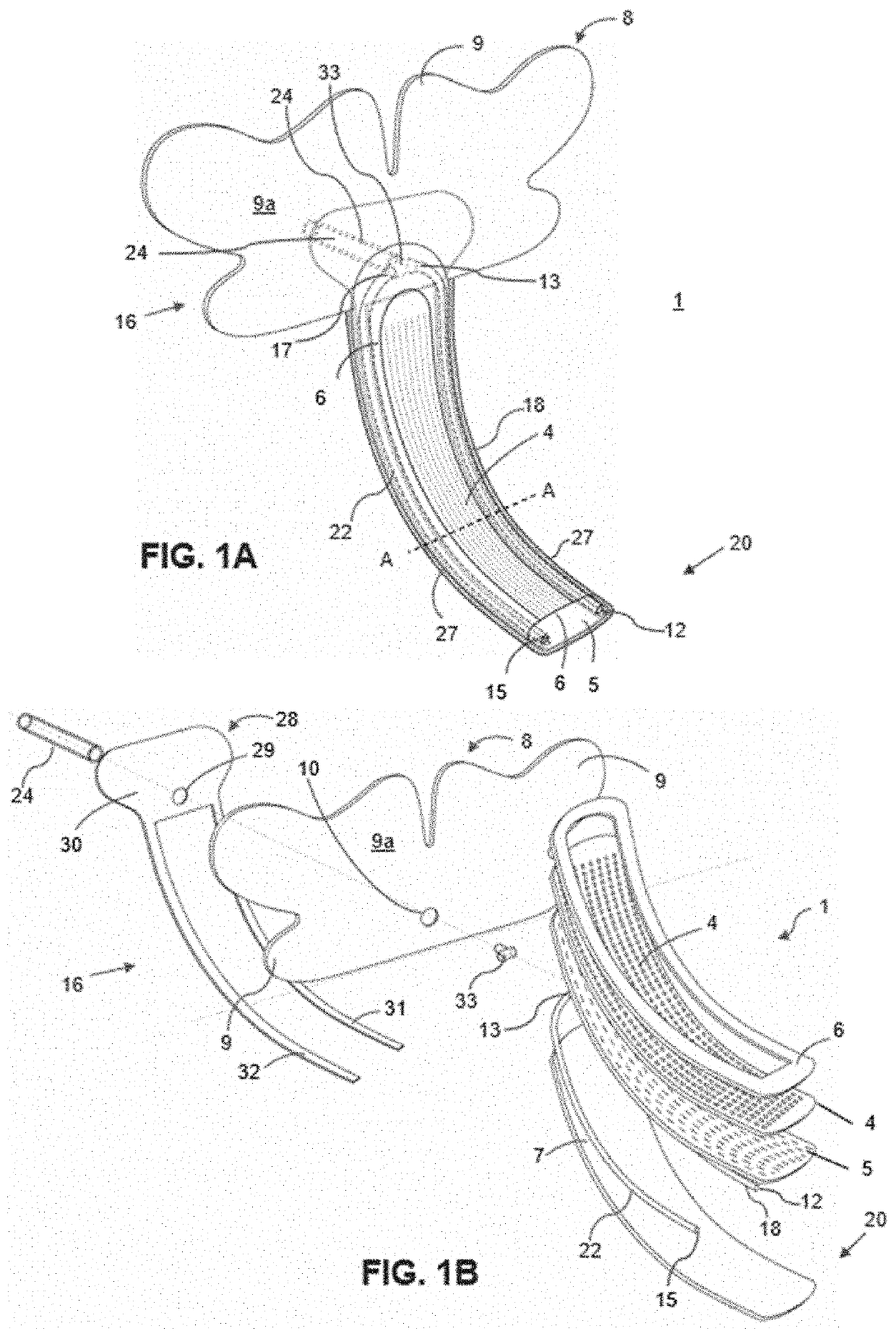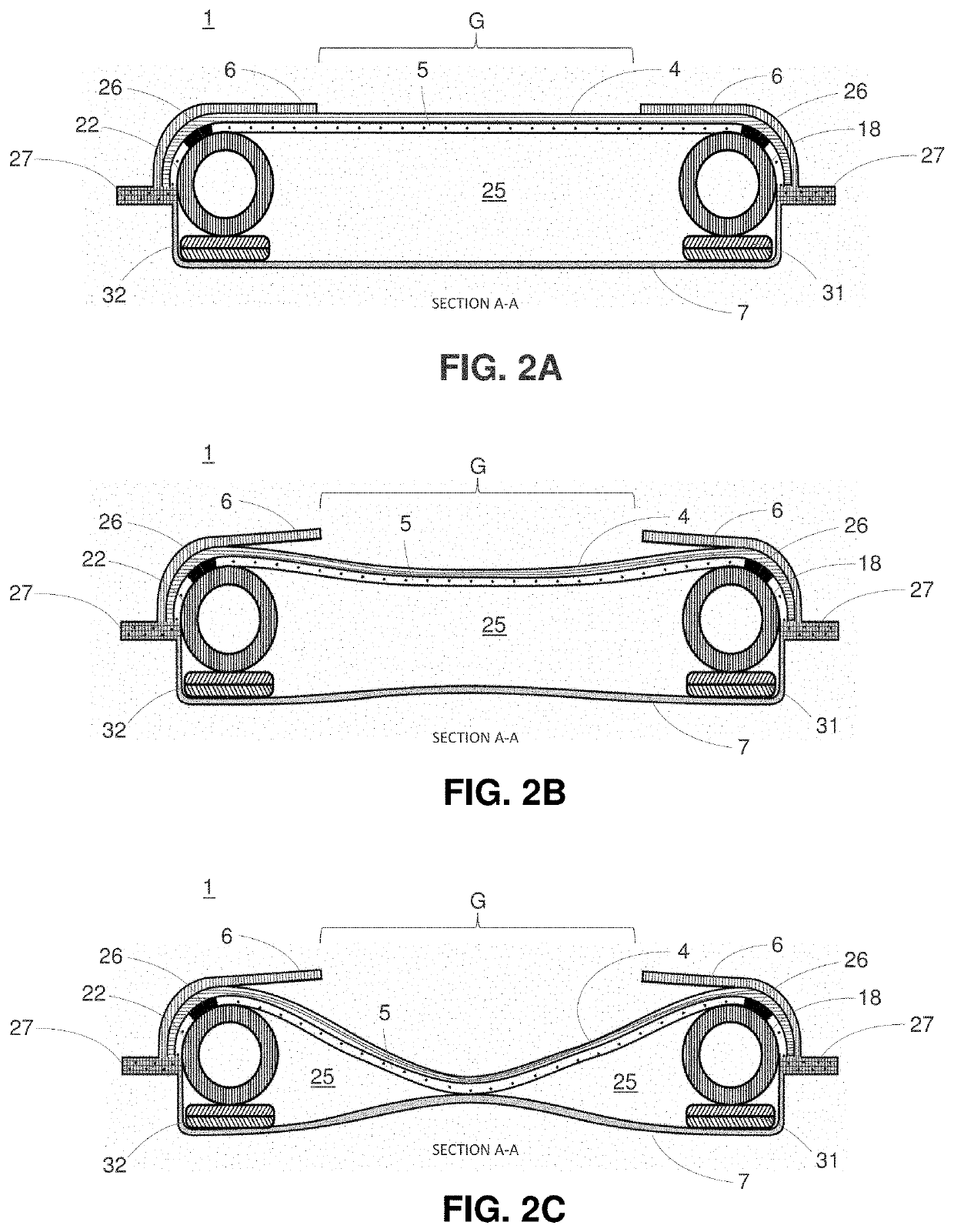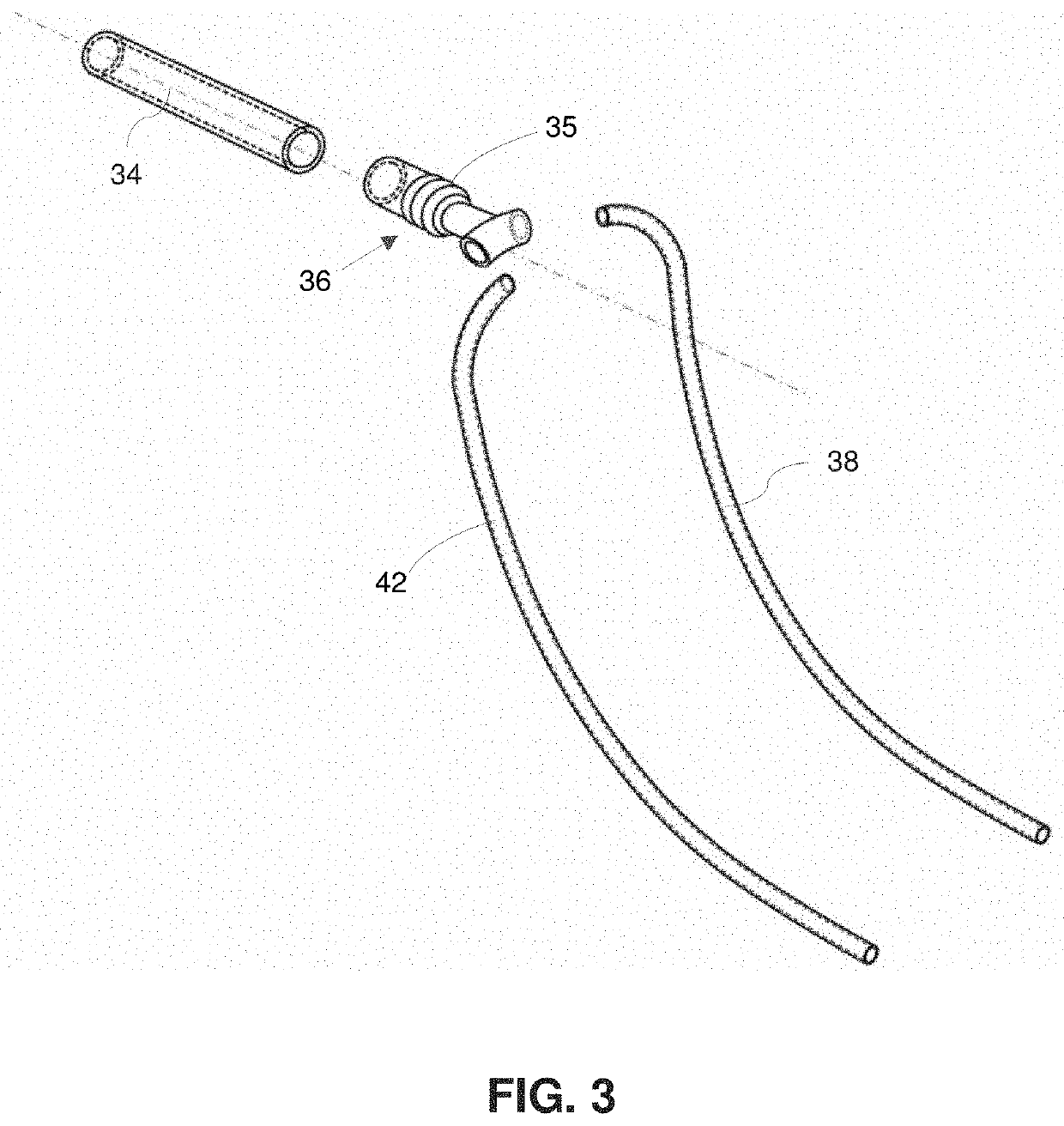Female fluid removal device
a technology of fluid removal device and urethral tissue, which is applied in the field of female fluid removal device, can solve the problems of significant risk of patient harm during insertion and use, significant impairment of urethral tissues, and inability to fold or operate, so as to improve suction efficiency and prevent the effect of folding or enhancing the ability of the apparatus to opera
- Summary
- Abstract
- Description
- Claims
- Application Information
AI Technical Summary
Benefits of technology
Problems solved by technology
Method used
Image
Examples
Embodiment Construction
[0103]Described herein are urine removal devices that are suction-assisted and enable urine to be conveniently and hygienically removed from the region surrounding a female patient's genitalia area.
[0104]The term “proximal” and “distal” are used with reference to the length of the urine removal device; that is, “proximal” denotes the first end of the device toward the suprapubic region where it engages with (or is positioned in the vicinity of) the lower abdomen and “distal” denotes the opposed second end of the device toward the end where it resides between the legs of the patient positioned or located in the vicinity of perineum. For the purposes of this disclosure, the terms “inner” and “outer” are used with reference to upper and lower surfaces of the urine removal device or components thereof. That is, “inner” denotes a surface or direction that is coincident with or is in the direction adjacent to or toward the genitalia. In contrast, “outer” denotes a surface or direction tha...
PUM
 Login to View More
Login to View More Abstract
Description
Claims
Application Information
 Login to View More
Login to View More - R&D
- Intellectual Property
- Life Sciences
- Materials
- Tech Scout
- Unparalleled Data Quality
- Higher Quality Content
- 60% Fewer Hallucinations
Browse by: Latest US Patents, China's latest patents, Technical Efficacy Thesaurus, Application Domain, Technology Topic, Popular Technical Reports.
© 2025 PatSnap. All rights reserved.Legal|Privacy policy|Modern Slavery Act Transparency Statement|Sitemap|About US| Contact US: help@patsnap.com



